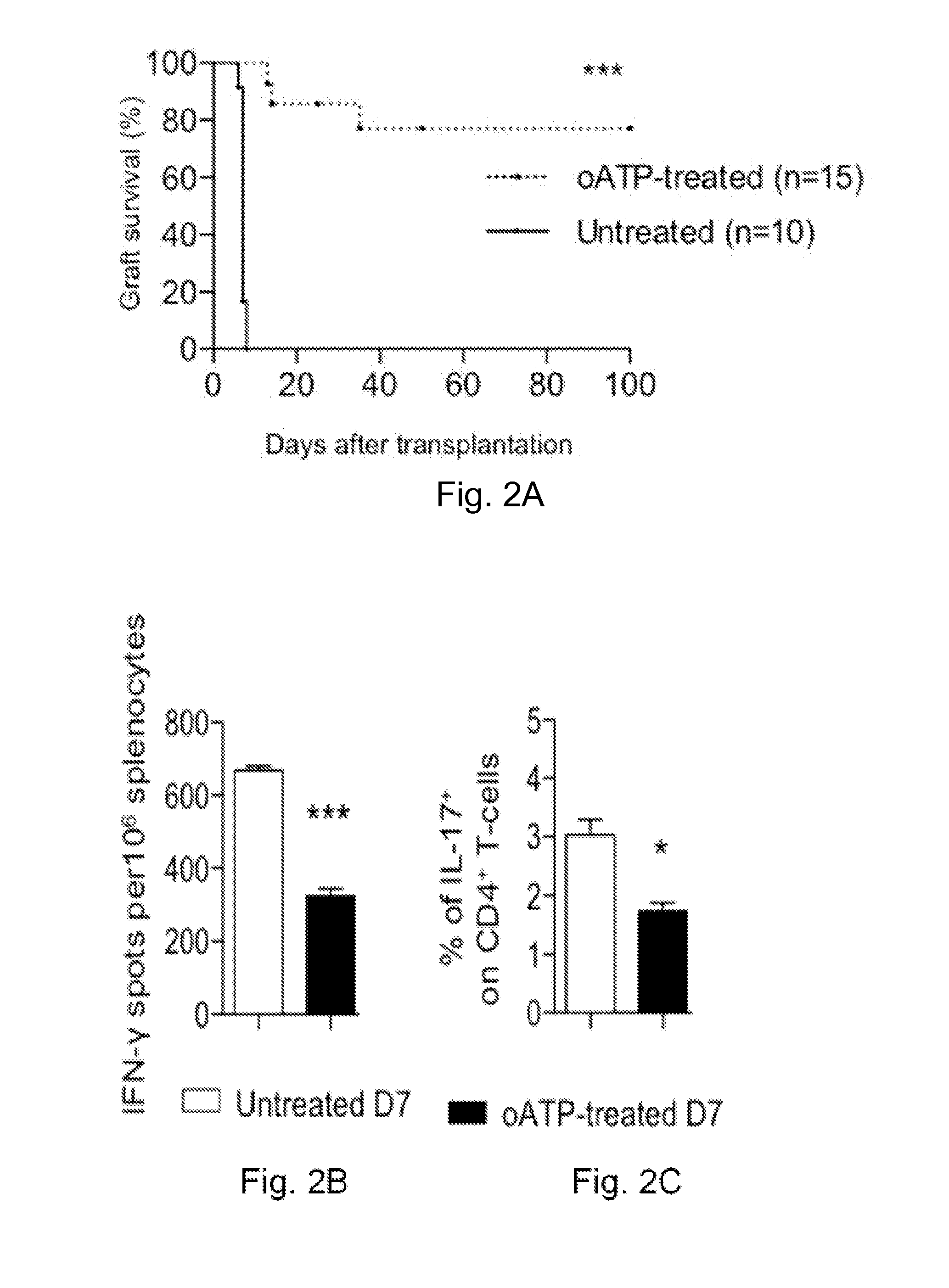Method of preventing and treating type 1 diabetes, allograft rejection and lung fibrosis (by targeting the atp/p2x7r axis)
- Summary
- Abstract
- Description
- Claims
- Application Information
AI Technical Summary
Problems solved by technology
Method used
Image
Examples
example 1
P2X7R is Specifically Upregulated in the Graft During Allogeneic Heart Rejection
[0205]The inventors evaluated the expression of P2XsR in cardiac transplants in vivo. Hearts from BALB / c (H-2d) mice were heterotopically transplanted into C57BL / 6 (H-2b) mice, and cardiac transplants were harvested at day 7 after transplantation (the average time for cardiac transplant rejection). Expression of the P2XsR was compared to baseline values (i.e. untransplanted BALB / c hearts or naïve C57BL / 6 splenocytes) by real-time PCR. Upregulation of P2X1R (14-fold increase), and P2X7R (9-fold increase) receptors was observed in the cardiac transplants (FIGS. 1A, 1B). Conversely, no induction of P2XsR was observed in splenocytes of cardiac-transplanted mice. To dissect the specific effect of the alloimmune response from effects of ischemia-reperfusion injury and nonspecific inflammation, P2XsR expression in allografts and syngrafts was compared (C57BL / 6 hearts into C57BL / 6 recipients). P2X1R, and P2X7R w...
example 2
P2X7R Targeting Promotes Heart Graft Survival
[0206]The effect of P2X7R targeting in preventing cardiac transplant rejection was tested using the P2X7R inhibitor oATP. P2X7R targeting using short-term treatment of oATP (250 mg oATP i.p. daily for 14 days) induced long-term cardiac transplant survival (>100 days) in 80% of recipients (FIG. 2A).
example 3
P2X7R Targeting Promotes Donor-Specific Hyporesponsiveness and Graft Protection
[0207]To evaluate the effect of P2X7R targeting on the immune system of cardiac-transplanted mice, splenocytes were harvested at days 7 and 100 post-transplantation and were challenged with BALB / c irradiated splenocytes in an ELISPOT assay. Reduced numbers of IFN-γ-producing cells were observed in oATP-treated compared to untreated mice at day 7 (FIG. 2B). The percentage of Th17 cells was similarly reduced in oATP-treated mice (FIG. 2C). Graft protection and reduced infiltration was observed at day 7 and 100 after transplantation (data not shown)
PUM
| Property | Measurement | Unit |
|---|---|---|
| Solubility (mass) | aaaaa | aaaaa |
| Ectodomain | aaaaa | aaaaa |
Abstract
Description
Claims
Application Information
 Login to view more
Login to view more - R&D Engineer
- R&D Manager
- IP Professional
- Industry Leading Data Capabilities
- Powerful AI technology
- Patent DNA Extraction
Browse by: Latest US Patents, China's latest patents, Technical Efficacy Thesaurus, Application Domain, Technology Topic.
© 2024 PatSnap. All rights reserved.Legal|Privacy policy|Modern Slavery Act Transparency Statement|Sitemap



